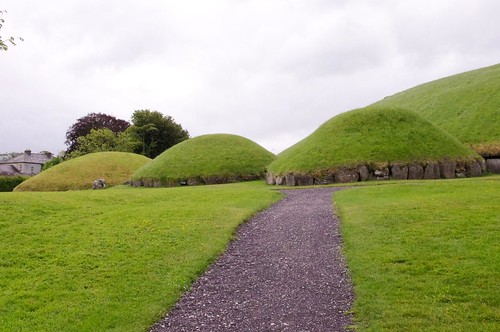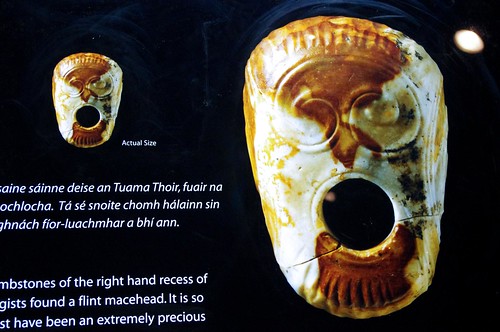Yesterday, I told you a bit about Swords Castle, digging on day 1. Basically, this fortified house / castle is undergoing a series of 2 week long community participation Archaeological digs supervised by Fingal Community Archaeologist: Christine Baker. You can find out more about when they are held and participate yourself much like I did for two days:
http://www.fingal.ie/planning-and-buildings/heritage-in-fingal/swordscastledigginghistory/
The archaeology is in preparation for renovations to be held on the site (some of the modern buildings along the street are to be pulled down) and to allow for further discovery and historical preservation of the location. I decided to join the dig for 2 days and was placed into the third trench.
While Day one was hard going with the digging (hard dry ground – despite the cool temperatures), it rained over night. For Day two this was a mixed blessing. This meant that the soil was softer to dig – but much more muddy and messy. Not fearing the mud, we began tackling the trench and removing layers of soil with picks and shovels. Then, it started to rain. Everyone was quite determined, and kept on plugging away at the trench – having donned rain gear

We continued until lunch, when the heaviest of downpours started. I ate lunch, then went on to explore the Constable’s building which was open and dry inside.

The constable’s building (above) was redone in 1995-1998. They basically put a wooden roof on the building and restored it to the expansions that the Dutch settlers to the castle put in in the 1500’s. The ground floor is all set for storage of food, wine and other goods. If you open the door with it’s massive hinges and go up the circular staircase to the first floor
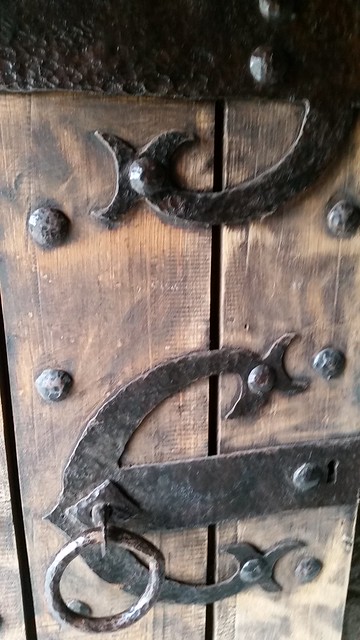
Massive hinges
You enter into the living quarters. Here you will find a huge oaken door with a wooden timber that is embedded into the wall – and could be locked in place for security in case of invasion.

There’s a huge fireplace with metal braziers with horned dragons:
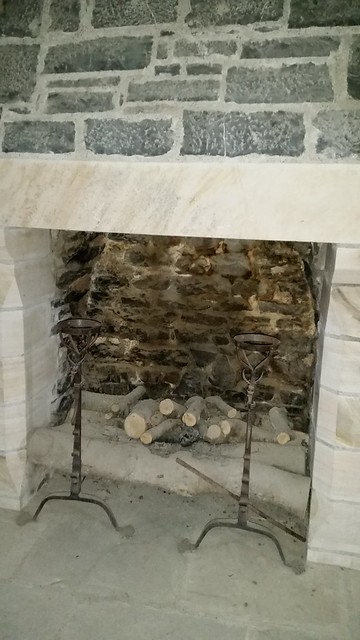
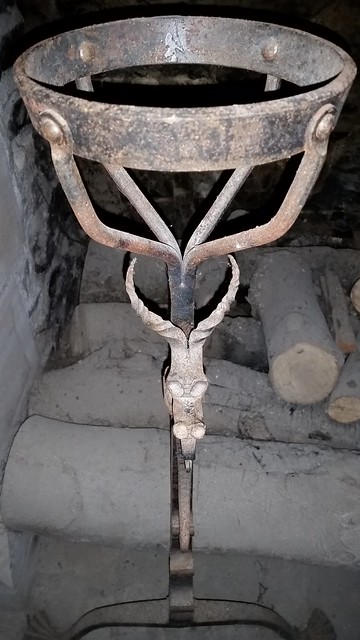
If you go up again, there’s another fireplace, and a welcoming benched table next to stained glass windows, and above you there’s a gorgeous wooden ceiling with a carved animal type chandelier.

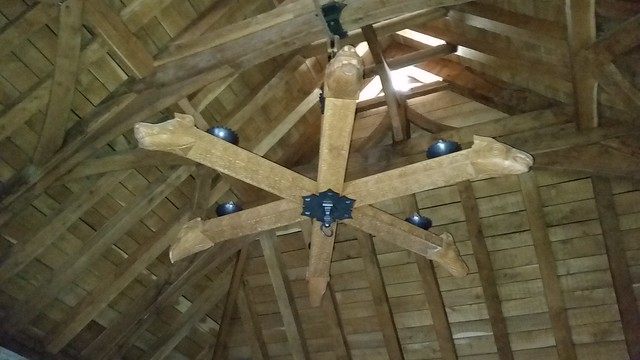
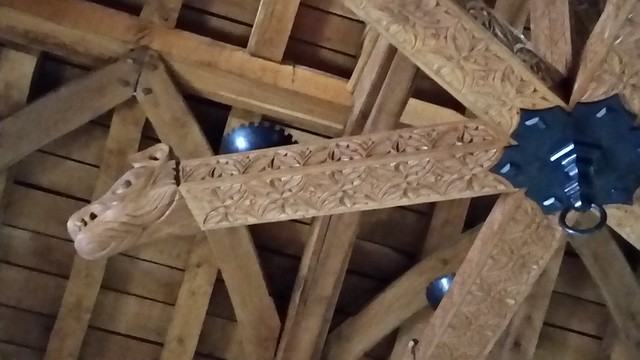
There’s also the Privvy / Guardrobe area (where one would hang the clothes for airing out the lice). One funny thing to note about the Privvy – is that it’s quite set to recline – and that there’s an angled hole (you can’t see in or out) to allow for sound to carry through so conversations / meetings could still continue while they were doing their business.
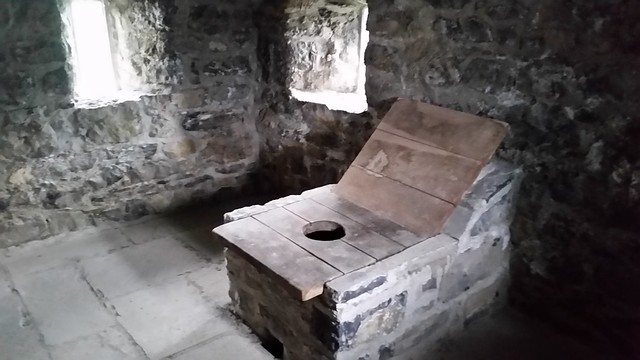
After lunch the rain continued. Trench 1 had digging halted – they had discovered a wall, but the depth of it (over 5 feet deep) was making it unsafe in the rain.

Trench two where a flag stone floor was discovered was cleaned up and logged:
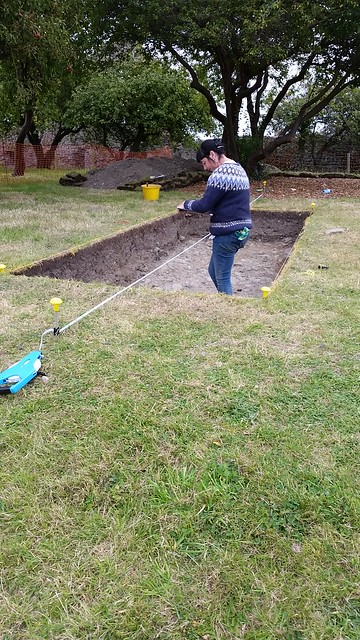
Trench 3 still had digging continue, but because I didn’t have great footwear – I opted to go under the tent and started cleaning our finds with water, toothbrushes, small dental picks, and the like.

A few more finds from the site:

An old pipe
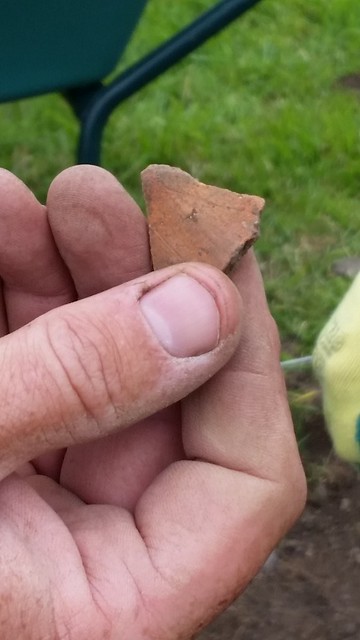
Wall plaster
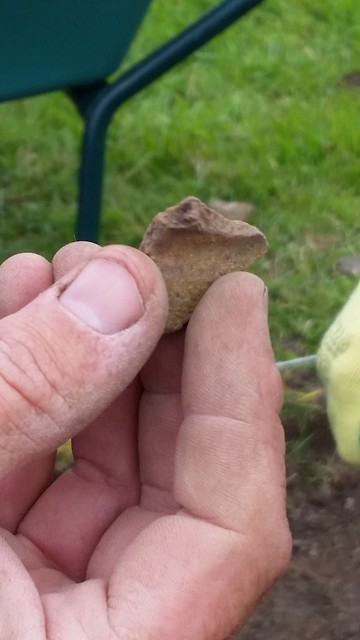
Pottery from the 1400’s – not fully baked
By the end of the day – I had to laugh. Two of the “mudlark” archaeologists who stayed out in the weather came in for a well deserved hot cup of tea – and I had to snap a picture… Digging the castle isn’t for the weak.
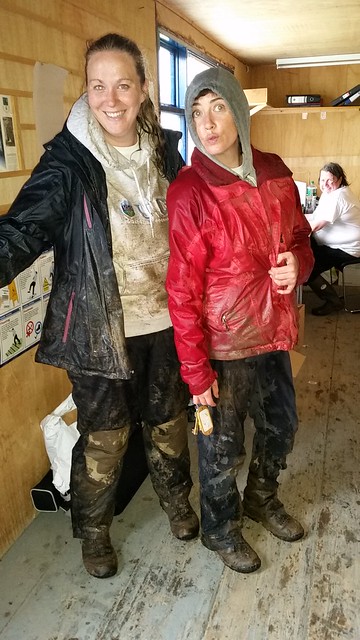
I’m looking forward to more excavations in the summer, and you can follow the discoveries and finds on their facebook page at:
https://www.facebook.com/search/top/?q=swords%20castle%3A%20digging%20history


